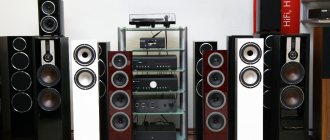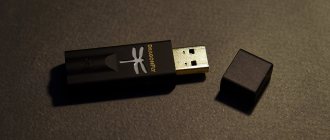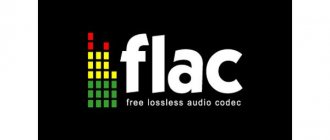According to search engine data, users are not so interested in the question of how much traffic Internet radio consumes Of course, in the age of high speeds on the network, fewer and fewer people are forced to control the amount of data received and transmitted. However, we decided to look into this issue in detail, since among many listeners we discovered a complete misunderstanding of this topic.
Since Soviet times, radio has been perceived as a kind of always-on and free “talker”. Many people at that time, when leaving home, even left the radio on in the background, so that there was a feeling that someone was in the apartment. Those days are gone, but the stereotype that you can listen to a lot of radio, including online, anywhere and as much as you like remains. We are forced to partially refute this belief.
Internet radio consumes a lot of network traffic. Of course, this does not particularly concern those who have unlimited Internet access at a fairly high speed.
Who's louder?
In vain many people think that it’s only a matter of bitrate. Although few people indicate the bitrate, and even reduce it without our knowledge. Many broadcasters also did not care about the recommendations of the Audio Engineering Society, which stipulate the maximum volume level of the stream stream.
What do we end up with? First, the phonogram was subjected to brutal compression of modern mastering in the style of Loudness War. Then this song is also transmitted with the volume level going off scale, re-clipping the already tortured signal. An example would be a sample of a Deezer stream captured on the fly in digital form.
Deezer radio service abuses volume, which leads to distortion in the DAC
As you can see, despite the rather high bitrate, the volume regularly sticks to 0 dB and causes a lot of distortion associated with clipping. Although they say that Spotify has come to its senses.
Therefore, when considering a new station, we will also pay attention to the dynamic aspect. The primary important selection criterion will be the Lossless audio stream. It should not be processed by the encoder with loss of information, even if it is quite high-quality AAC or 320 kbps. That's why Linn Radio and others like it - sorry, today we're not talking about you!
Love, money and 24 bit
Currently, a number of audiophile services, for example Tidal, provide access to Hi-Res audio as part of a subscription. But paying for this service is not so easy, while Tidal does not officially work here. We need workarounds, which we’ll talk about some other time. Let's focus on online radio stations that broadcast without restrictions in every sense.
Most lossless radio uses a 16-bit, 44 kHz signal. Well, that's quite reasonable. Most albums are still available in the good old Red Book, and the difference between 16- and 24-bit audio is not so critical compared to sound degradation on lossy codecs. In general, you understand me: on a 16/44 stream, the data density is about megabits per second, and there is no particular reason to increase the traffic by one and a half times.
How to listen
Resources with lossless streams that we managed to find are in no hurry to announce the coveted link on the main page. Why overload the server if “everyone listens to MP3”? Most likely, you will find an interface player on it with a regular lossy stream, which can automatically reduce the bitrate if the system decides that the transmission channel is too narrow. The links we need to the flac stream can usually be found on specialized forums dedicated to this task. The resulting address should be entered into your own software player that supports http broadcasting - the same foobar2000 or VLC.
Loading the web address of an Internet radio station for streaming via Foobar2000
VLC, by the way, opens up a lot of functionality on portable devices. This is what I will use on my iPhone and iPad. The audio stream for analysis can be captured digitally through the optical output of the docking station, or you can simply save the stream through Foobar2000 into a separate wav file, which is then viewed in an audio editor.
Broadcasting Internet radio on a portable device can be configured using the universal VLC player
Is this necessary at all?
It’s difficult to judge, but if you want to listen to the radio of not only your city and your country, then such applications are indispensable. True, there are also pitfalls. For example, "Radio Online"
I am completely satisfied, since you can find high-quality foreign music there and the choice of stations is very wide, but the advertising infuriates me (although it is not broadcast in the tray).
On the other hand, there is “Simply Radio”
- an application without advertising, but it is aimed at a specific region, so it is better to use it as a background (for example, in a car), and track traffic jams through Yandex.Maps.
TuneIn Radio
- an excellent solution with a good selection and personalization for those who prefer foreign performers.
However, you can also find a domestic “package” here, the only pity is that the subscription price is very steep, which is to blame for the exchange rate. As for PCRADIO
, this is an Internet radio for everyone with a large number of stations, but the energy consumption is sad, so this solution is for a “stationary”.
Soviet means excellent
Surprisingly, when it comes to lossless streaming, all audiophile genres are blown away by the wind. I was unable to find a single resource with classical music. The old links led to a single Czech site, but for a long time only lossy ones were broadcast there. But fans of electronic music turned out to be conscientious radio listeners. Domestic Internet radio "Sector" offers two FLAC streams - Progressive and Space. However, the designation “electronic music” is quite arbitrary here. In addition to house or trance, there are ethno, minimal acoustic, and chill-out sounds. This is a normal urban musical format. As the graphs of the captured stream show, everything goes without deception or loss of quality. But in terms of volume on both streams, there is still an overlap of more than 1 dB. So clipping is possible on drum rhythms.
Radio “Sector” is an honest lossless spectrum, but the volume of the stream can be too much
Web player links: Sector Space https://89.223.45.5:8000/space-flac, Sector Progressive https://89.223.45.5:8000/progressive-flac
Another local resource, Radio Nina, appears to be run by one person and is most likely a pirate stream. The repertoire is standard mainstream from Doors to Pink. You can listen to the lossless stream only after registration. It is not difficult to repair it yourself, but there is a nuance. Everything will work on Foobar2000, but not on a portable device. In any case, the music did not start on VLC for me, despite the fact that I logged in to the site again. The spectrum of “Radio Nina” is in perfect order, but no one monitors the volume either, and if the track is loud, its peaks will inevitably end up clipping.
Radio “Nina” also has everything fair with the spectrum, but the escalations with volume are even more indecent
Link for web player: https://radionina.ru/streamflac/
Just Radio
This solution compares favorably with its competitor in the absence of advertising and paid subscriptions, that is, according to the developers, it works on sheer enthusiasm. Naturally, in this case you should not expect a large selection of radio stations, and this is mainly the Moscow region. But it has a recording function, a minimum distribution size, a free sleep timer, and auto-stop playback for incoming and outgoing calls.
The program interface is single-window and made in light gray tones, that is, it will not fade in the sun. There are only three tabs - “Stations”, “Favorites” and “Settings”. In the first, you can select a radio station according to the music genre (there is a quick search by name, and a corporate logo is loaded for each stream). At the very bottom there are slightly clumsy control keys, there is quick access to favorites.
In the settings, you can select the buffer size manually, as well as set the sleep timer. The last function is in test mode, so it may not work. Whatever it was, everything worked for me within a week. In addition, a dark theme is installed in the parameters (a kind of night mode). There is no equalizer or playback quality selection. There are about 150 radio stations.
Connection to all radio stations occurs instantly, even with an unstable Internet connection. If you wish, you can open the service provider’s website from the program, which I personally liked, since all the information about the radio stream is available. Adding to favorites works without resetting the list in the future, just as recording a broadcast works without any problems, although this is also a beta option that works in test mode until April 1. This way, you can chop up your playlist and then enjoy it offline. Of course, the recording quality is not for audiophiles, but Internet radio itself is not for them either.
A simple interface and the absence of bells and whistles and advertising did their job - the application consumes only 66 MB of RAM, practically not loading the processor. Battery charge is consumed to a minimum, since the most compressed stream is used. Thus, the battery can sag by only 5% per day with an energy consumption rate of 11 mW.
Compatibility with Android 4.0.3 or higher is declared; there are no advertisements, as promised. The application weighs only 7 MB on the system and does not contain viruses. The permits are minimal, and there is nothing criminal about them.
Free information:
- Author rating: 5.0
- Google Play rating: 4.8
- Developer: A-lab (Russia)
- Application version: 5.0
- Last updated: December 01, 2016
- Number of downloads on Google Play: 1,000,000-5,000,000
- Android app compatibility: 4.0.3 or higher
- Installed size: 7 MB
- Maximum CPU/RAM system load: 0.07%/70 MB
- Maximum battery consumption: 15% (11 mW)
- In-app purchases: no
- Advertising: no
Pros:
- Quick connection to radio stations
- Low system load
- Easy setup and management
- Sleep Timer
- Ability to record stream
Minuses:
- Limited selection of radio stations
Rarities and deception
In the thematic sections of Internet radio it is always interesting to poke at random (like Senegal/Religious) and fall into another universe. Unfortunately, Senegal doesn't care much about lossless radio. However, they do not really care about it in the more prosperous regions of the planet. The number of detected lossless radio stations can be counted on one hand. In the USA or Japan it is useless to look for free FLAC radio, but in Europe there are still a few.
One of them is JB Radio2. Along with modern music, the station broadcasts a lot of old-school content, while, fortunately, not overusing the hits of Soviet music lovers. On the playlist, Sade sits next to Bob Dylan and Fleetwood Mac. In general, different names come up, including those who were in our shadows, and it’s especially interesting to listen to them.
JB Radio streams a regular lossy stream passed through a 192 kHz upsampler
And it was even more offensive to learn that the source of the JB Radio 2 broadcast was lossy files. The frequency is cut off at 16 kHz, guess what the bitrate was there - guess for yourself. But the height of insanity was that this stuff is transmitted in a container with a resolution of 192 kHz, which greatly loads the channel to more than two megabits per second! That is, an artificially inflated 16-bit/192 kHz audio stream is received, which contains a banal mp3 inside. For comparison, I downloaded the broadcast at 320 kbs, you can compare the quality - there is no difference, except for the channel width. The Greek admin declined to comment on this situation. The only consolation can be the thought that on radio stations the vast majority of music is transferred to MP3, and in this case the phonogram simply avoided the fate of being converted into a lossy stream again.
Web player link : https://209.126.66.166:10999/flac.m3u
How much traffic does internet radio take?
Before we start counting, we note that all online radio streams differ in bitrate, that is, the data transfer rate per second. The lowest bitrate is 32 Kbps. It has extremely poor sound quality. In our opinion, the optimal ratio between quality and traffic consumption is online radio at 128 Kbps . It is with this bitrate that the vast majority of streams on the site are broadcast.
So, 128 Kbit is the amount of data received by the user’s computer in one second. Considering that 1 MB = 1024 KB = 8192 Kbit, it is easy to calculate that in one hour (3600 seconds) Internet radio will require 460,800 Kbit, or 56.25 MB. This figure is comparable in volume to downloading 10-15 songs from the Internet in average quality. Note that many articles on the Internet on this issue state that 450MB of traffic is allegedly consumed per hour. This is wrong. The authors of such calculations miss that the speed is calculated in kiloBITS, and not in kiloBYTES, and do not take into account that 1 byte contains 8 bits.
Continuing the arithmetic calculations, we can conclude how much traffic is spent on listening to radio on the Internet: 1 gigabyte of listening to the radio will be used up in more than 18 hours. In exactly one day of continuous listening to online radio with a bitrate of 128 Kbps, 1.31 GB will be spent .
These are the exact calculations. And this rule applies to any website and phone application where the radio operates at a data transfer rate of 128 Kbps. If someone tries to present any other calculations, then he is simply counting incorrectly or is deliberately misleading. Therefore, be careful. Traffic consumption when listening to Internet radio is subject to the laws of mathematics, which cannot be changed even by the most modern technologies. You can only change the volume of traffic if you change the bitrate - the data transfer speed itself, and, consequently, reducing the sound quality!
A convenient radio traffic calculator with the ability to easily calculate the resources spent on listening to streams with different bitrates is presented on the website
French Kiss
The French radio station L'Eko has quite a physical broadcast frequency of 88.5 MHz in its homeland. There seems to be no exotic repertoire: mainstream pop-rock and hip-hop, but not a single familiar name. The quality analysis showed, alas, that there was a lossy codec in the source. The only difference is that it looks like AAC with a softer filter was used. And the volume is ok without being overloaded. Maybe they read the Mastered for iTunes article?
Web player link: https://91.121.159.124:8000/eko-des-garrigues-max.flac
L'Eko lies about the lossless stream, but doesn't mess around with the volume
Another French Frequence3. And here, too, the frequency is cut off, but every other time. There is a normal track, and then it is cut off, although quite high - at 20 kHz. The volume is prudently stopped at -1.5 dB. And although we don’t actually have clipping in our measurements, it is likely that the audio stream was passed through its own dynamic compressor. The music is mostly faceless Euro-pop.
Frequence3 radio broadcasts both lossless and lossy sources
Web player link: https://hd.stream.frequence3.net/frequence3.flac
The French trio is completed by Sing Sing, which seems to be more oriented towards traditional rock content, although again with regional preferences. The spectrum and volume are okay, but the music will probably only be of interest to Francophones.
Sing Sing has everything in order except for the repertoire
Web Player Link: https://stream.sing-sing.org:8000/singsingFlac
Quality increases north of Germany
And here's 440Hz Radio. It's funny, but the sampling frequency here is not 44 kHz, but 48 kHz. Mouzon is about as diverse as L'Eko's, but the emphasis is on German vocalists: Die Toten Hosen and so on. Listen to those who are interested. As for the length of the spectrum and volume, the broadcast has no problems with this. But 48 kHz of the audio stream indicates that there is still a resampling of the original, which is 44 kHz for a CD. And from an audiophile point of view, this procedure is not so harmless.
“440Hz” radios transmit a lossless audio stream, but with a resolution of 48 kHz
Web player link: https://pop-radio.eu:8080/pop.flac.ogg
Although the website of the Ai-Radio service from the Netherlands looks like an amateurish stylization of a DOS interface, you can easily choose the desired bitrate on it, no one is hiding anything. The music is selected mainly from video game soundtracks, that is, any music: an abstract electronic collage can be followed by an old classic soundtrack. I just wanted to say about honest quality - no extra encoders and compressors, when suddenly I came across a track with obvious signs of MP3 origin. Okay, let's chalk it up to an isolated case. To be fair, it should be said that even on CD collections this happens all the time.
Web player link: https://ai-radio.org/44.flac
Ai Radio generally works fairly with both volume and spectrum
The Norwegian resource Kyber.io, judging by the manga design, specializes in Japanese music. Maybe for some other one, but at least not a single artist could be identified. The musical selection is quite interesting: easy-listening with varying degrees of freakiness. The audio stream appears to be free of mpeg filtering artifacts. In any case, audiochecker did not recognize anything criminal. And the volume does not go beyond the red line. Perhaps this channel will have to be awarded the winner's medal, since the main contender JB Radio 2 was disqualified for deliberately violating doping control.
Web player link: https://r.kyber.io/flac
It’s a shame to complain about the technical characteristics of the Kyber.io resource, and the music is not banal
Radio Online
This solution doesn't have enough stars in the sky, but simply offers thousands of radio stations completely free and without advertising. Moreover, they are divided by genre, and the application interface is incredibly simple. The main drawback of the program is full-screen advertising, which cannot be disabled.
The application interface is four-window, where the last window is not a window at all, but a button to turn off “Radio Online”. The remaining tabs include the top developer, a list of all available stations with a choice of broadcast country (there is even Saint Lucia) and favorites. What I liked is that opposite each channel its default bitrate is indicated, that is, there is no hardware enhancement of sound quality. Maybe this is correct, since it does not overload the system.
Therefore, there are no settings as such, which means we’ll immediately move on to testing. The number of available domestic radio stations and the connection speed were frankly pleasing. No crashes or bugs were noticed, but work in the background is guaranteed only when minimized to tray. You can also add your own channel (as well as a description, name, etc.) - to do this, just specify the broadcast address. Working with Basurmansky radio is also implemented well - it is possible to select a station with very good broadcast quality.
As for the load on the system, everything is normal here - 140 MB of RAM with practically zero on the processor. The application consumes no more than 2% per day during moderate listening with a power consumption rate of 7 mW.
“Radio Online” is compatible with almost all versions of Android, weighs 16 MB on the system, is distributed free of charge, but contains advertising that cannot be turned off. There is nothing criminal in the permissions, there are no viruses.
Free information:
- Author rating: 4.9
- Google Play rating: 4.4
- Developer: Alexandr Sotnichenko (Russia)
- Application version: 2.7
- Last updated: March 08, 2017
- Number of downloads on Google Play: 500,000-1,000,000
- App compatibility with Android: 2.3 or later
- Installed size: 16 MB
- Maximum system load CPU/RAM: 0.02%/140 MB
- Maximum battery consumption: 10% (7 mW)
- In-app purchases: no
- Advertising: yes
Pros:
- Quick connection to radio stations
- Wide variety of streams
- Low system load
- Easy setup and management
- Breakdown of stations by genre
Minuses:
- Ads that can't be turned off










